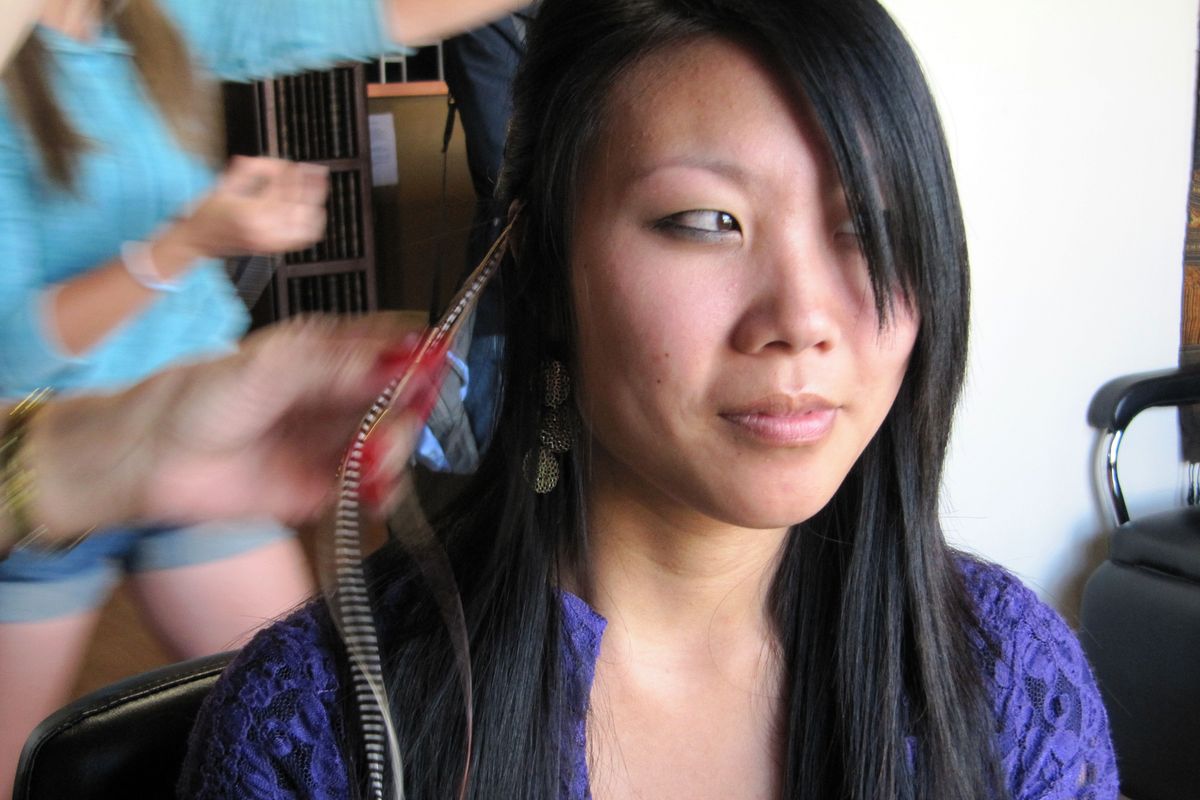Feather extensions leave fly fishing shops on the hook

BOISE — For a 49-year-old manager of a fly fishing shop, Jim Bernstein spends an awful lot of time on the phone with hairdressers.
They bought out his display of hackles — the long, skinny rooster feathers fishermen use to make lures — months ago. But the calls keep coming at Eldredge Bros. Fly Shop in Maine, and the women keep asking for more supplies as they fight to keep up with the latest hair trend: feather extensions.
Nationwide, supplies at fly fishing shops from the coasts of Maine to landlocked Idaho are running out. Some hairdressers have gotten desperate to follow the craze that was fueled, in part, by “American Idol” judge and rocker Steven Tyler, who began wearing the feathers in his long hair.
“I’ve taught hairdressers over the phone how we dye the feathers so they can buy the un-dyed kind and dye them themselves,” Bernstein said.
Feather extensions are offered now at some Inland Northwest salons, including Dimensions Salon in Spokane Valley and Moxie Salon and Spa in Spokane.
Some feathers sold online are fetching hundreds of dollars more than the usual prices.
“I’m looking around the shop thinking, ‘Hmmm, what else can they put in their hair?’ ” Bernstein said
Fly fishermen are not happy, bemoaning the trend in online message boards and sneering at so-called “feather ladies.”
“It takes years and years and years to develop these chickens to grow these feathers. And now, instead of ending up on a fly, it’s going into women’s hair,” said Matt Brower, a guide and assistant manager at Idaho Angler in Boise.
The feathers come from roosters that are genetically bred and raised for their plumage. In most cases, the birds do not survive the plucking.
At Whiting Farms, Inc., in western Colorado, one of the world’s largest producers of fly tying feathers, the roosters live about a year while their saddle feathers — the ones on the bird’s backside and the most popular for hair extensions — grow as long as possible. Then the animal is euthanized.
As hair extensions, the feathers can be brushed, blow dried, straightened and curled once they are snapped into place. Most salons sell the feather strands for $5 to $10 apiece. The trend has become so popular a company online even sells feather extensions for dogs.
The craze has also left hairstylists scrambling to find rooster saddle feathers, as fly shops hold onto a select few for their regular customers. The businesses will now ask if the feathers are for hairdressing, said Shelley Ambroz, who owns MiraBella Salon and Spa in Boise.
“If you go in and you’re a woman, they won’t sell to you,” said Ambroz.
Whiting Farms is harvesting about 1,500 birds a week for their feathers and still can’t keep up with its current orders, said owner and founder Tom Whiting, a poultry geneticist.
The company told Bernstein in Maine several months ago that rooster saddle feathers had somehow become the latest coveted hair accessory. Bernstein said he scoffed at the notion that it could reach his shop along the coast of southern Maine.
But his inventory of rooster saddle feathers has long been depleted. About three weeks ago, he dusted off a rooster neck with feathers that had been set aside for fly tying classes. The neck would have normally cost $29.95, but the shop sold it for $360.
It’s not uncommon to find a package of rooster saddle feathers that would have cost around $60 at a fly shop now priced from $200 to $400.
A package of the most popular fly tying hackle for hair extensions, a black and white striped feather called grizzly saddle, would normally retail anywhere from $40 to $60. It sold for $480 on eBay last month after 31 bids.